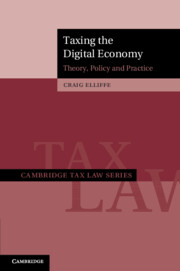30 results
7 - Balancing Public Interests through Limitation, Allocation and Execution of Limited Rights
- from Part II - Connecting Limited Rights
-
-
- Book:
- Optimizing Public Interests through Competitive Tendering
- Published online:
- 11 April 2025
- Print publication:
- 17 April 2025, pp 291-322
-
- Chapter
- Export citation
Meritocracy in psychiatry training: abandoning the common good: commentary, Stewart
-
- Journal:
- The British Journal of Psychiatry / Volume 226 / Issue 3 / March 2025
- Published online by Cambridge University Press:
- 25 March 2025, p. 192
- Print publication:
- March 2025
-
- Article
- Export citation
8 - Access to Scarce Interventions
- from Part II - COVID-19, Disparities, and Vulnerable Populations
-
-
- Book:
- COVID-19 and the Law
- Published online:
- 27 October 2023
- Print publication:
- 09 November 2023, pp 116-128
-
- Chapter
-
- You have access
- Open access
- HTML
- Export citation
Numerosity and allocation behavior: Insights using the dictator game
-
- Journal:
- Judgment and Decision Making / Volume 12 / Issue 6 / November 2017
- Published online by Cambridge University Press:
- 01 January 2023, pp. 527-536
-
- Article
-
- You have access
- Open access
- HTML
- Export citation
6 - Claiming Cessation and Reparation for Breaches of Shared Obligations
-
- Book:
- Shared Obligations in International Law
- Published online:
- 07 July 2022
- Print publication:
- 21 July 2022, pp 179-218
-
- Chapter
- Export citation
9 - Development, Allocation and Management of IP
- from Part II - License Building Blocks
-
- Book:
- Intellectual Property Licensing and Transactions
- Published online:
- 21 June 2022
- Print publication:
- 30 June 2022, pp 248-279
-
- Chapter
-
- You have access
- Open access
- HTML
- Export citation
7 - Equitable Access and Allocation in the Anthropocene
-
- Book:
- Democratic Norms of Earth System Governance
- Published online:
- 12 August 2021
- Print publication:
- 29 April 2021, pp 138-151
-
- Chapter
- Export citation

Taxing the Digital Economy
- Theory, Policy and Practice
-
- Published online:
- 23 April 2021
- Print publication:
- 13 May 2021
Modular, hollow culms of rain-forest bamboos explain their persistence across a wide range of light environments
-
- Journal:
- Journal of Tropical Ecology / Volume 34 / Issue 1 / January 2018
- Published online by Cambridge University Press:
- 06 March 2018, pp. 1-16
-
- Article
- Export citation
Phenotypic Plasticity of Blistering Ammannia (Ammannia baccifera) in Competition with Direct-Seeded Rice
-
- Journal:
- Weed Technology / Volume 27 / Issue 2 / June 2013
- Published online by Cambridge University Press:
- 20 January 2017, pp. 373-377
-
- Article
- Export citation
Research on Modularized Design and Allocation of Infectious Disease Prevention and Control Equipment in China
-
- Journal:
- Disaster Medicine and Public Health Preparedness / Volume 11 / Issue 3 / June 2017
- Published online by Cambridge University Press:
- 15 November 2016, pp. 375-382
-
- Article
- Export citation
The Ethics of Allocating Uterine Transplants
-
- Journal:
- Cambridge Quarterly of Healthcare Ethics / Volume 25 / Issue 3 / July 2016
- Published online by Cambridge University Press:
- 11 February 2016, pp. 350-365
-
- Article
- Export citation
Long-term growth patterns of juvenile trees from a Bolivian tropical moist forest: shifting investments in diameter growth and height growth
-
- Journal:
- Journal of Tropical Ecology / Volume 31 / Issue 6 / November 2015
- Published online by Cambridge University Press:
- 14 August 2015, pp. 519-529
-
- Article
- Export citation
Allocation of Farm Financial Stress Among Income, Leverage, and Interest Rate Components: A Kansas Example
-
- Journal:
- Journal of Agricultural and Applied Economics / Volume 20 / Issue 2 / December 1988
- Published online by Cambridge University Press:
- 28 April 2015, pp. 15-24
-
- Article
- Export citation
Évaluations affiliées, dotations initiales et la surenchère dans les prises de contrôle
-
- Journal:
- Recherches Économiques de Louvain/ Louvain Economic Review / Volume 79 / Issue 3 / September 2013
- Published online by Cambridge University Press:
- 09 January 2015, pp. 91-123
- Print publication:
- September 2013
-
- Article
- Export citation
Influence of carbon mapping and land change modelling on the prediction of carbon emissions from deforestation
-
- Journal:
- Environmental Conservation / Volume 39 / Issue 4 / December 2012
- Published online by Cambridge University Press:
- 15 June 2012, pp. 325-336
-
- Article
- Export citation
What is typical?
- Part of
-
- Journal:
- Journal of Applied Probability / Volume 48 / Issue A / August 2011
- Published online by Cambridge University Press:
- 14 July 2016, pp. 379-389
- Print publication:
- August 2011
-
- Article
-
- You have access
- Export citation
Rationing of Resources: Ethical Issues in Disasters and Epidemic Situations
-
- Journal:
- Prehospital and Disaster Medicine / Volume 24 / Issue 3 / June 2009
- Published online by Cambridge University Press:
- 28 June 2012, pp. 215-221
- Print publication:
- June 2009
-
- Article
-
- You have access
- Export citation
How and Why Do You Declare a Major Incident?
-
- Journal:
- Prehospital and Disaster Medicine / Volume 23 / Issue 1 / February 2008
- Published online by Cambridge University Press:
- 28 June 2012, pp. 70-75
- Print publication:
- February 2008
-
- Article
- Export citation


